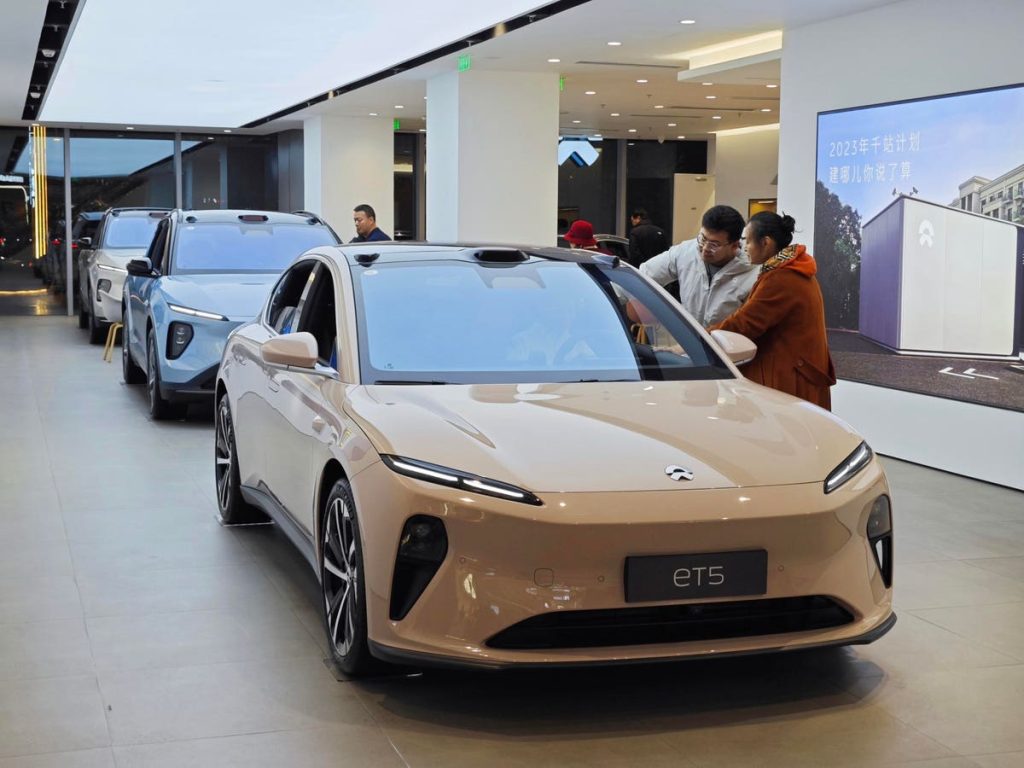Chinese luxury electric vehicle maker Nio stock delivered 15,959 vehicles for November, marking an increase of 12% from November 2022, although the numbers were slightly lower on a sequential basis. While Nio didn’t spell out what drove its growth, the company likely benefited from higher sales of the updated ES6 SUV, which debuted in May, while the price cuts carried out over Q2 also likely helped drive demand to an extent. Overall Nio has delivered 142,026 vehicles year-to-date in 2023, marking an increase of 33% compared to the last year. Nio’s growth rates continue to fall meaningfully behind rivals who posted even stronger monthly deliveries. For example, Li Auto delivered a record 41,030 units, up roughly 2.7x year-over-year, driven by strong demand for its three L-Series models which combine gasoline generators to extend the range of its EVs. Xpeng also sold a record 20,041 units, up 2.4x from November 2022.
NIO stock has suffered a sharp decline of 85% from levels of $50 in early January 2021 to around $7 now, vs. an increase of about 25% for the S&P 500 over this roughly 3-year period. Notably, NIO stock has underperformed the broader market in each of the last 3 years. Returns for the stock were -35% in 2021, -69% in 2022, and -27% in 2023. In comparison, returns for the S&P 500 have been 27% in 2021, -19% in 2022, and 20% in 2023 – indicating that NIO underperformed the S&P in 2021, 2022, and 2023. In fact, consistently beating the S&P 500 – in good times and bad – has been difficult over recent years for individual stocks.
In contrast, the Trefis High Quality Portfolio, with a collection of 30 stocks, has outperformed the S&P 500 each year over the same period. Why is that? As a group, HQ Portfolio stocks provided better returns with less risk versus the benchmark index; less of a roller-coaster ride as evident in HQ Portfolio performance metrics.
Given the current uncertain macroeconomic environment with high oil prices and elevated interest rates, could NIO face a similar situation as it did in 2021, 2022, and 2023 and underperform the S&P over the next 12 months – or will it see a recovery?
Nio stock has performed the worst of its peers, declining by about 25% year-to-date, and remains down by over 88% below all-time highs seen in 2021. There are also concerns about global EV demand, with most mainstream automakers, including Volkswagen, Mercedes, Ford, and GM indicating a softer-than-expected uptake. Automotive chip suppliers have also flagged weaker-than-expected uptake for automotive semiconductors for the fourth quarter. However, demand doesn’t appear to be an issue at the moment in China, with overall automotive sales rising by 10% for October, with battery electric vehicles accounting for close to 26% of total automotive sales. However, competition is mounting and this has resulted in considerable price wars. Investors have been concerned about Nio’s price cuts, which impacted average selling prices and reduced gross margins in recent quarters. Over the June quarter, gross margins stood at just 1%, down from over 13% in the year-ago quarter, although it appears that things could get better over Q3, due to higher volumes. Nio for its part guided for double-digit gross margin in Q3 and 15% margins in Q4. There were also reports that the company could cut its workforce by about 10% in a move that could reduce costs, although this could be partly offset by higher marketing spending, as the company promotes new vehicles. The stock also presently trades at under 1.3x estimated 2023 revenues, which is well below other EV players such as Tesla
TSLA
Invest with Trefis Market Beating Portfolios
See all Trefis Price Estimates
Read the full article here














